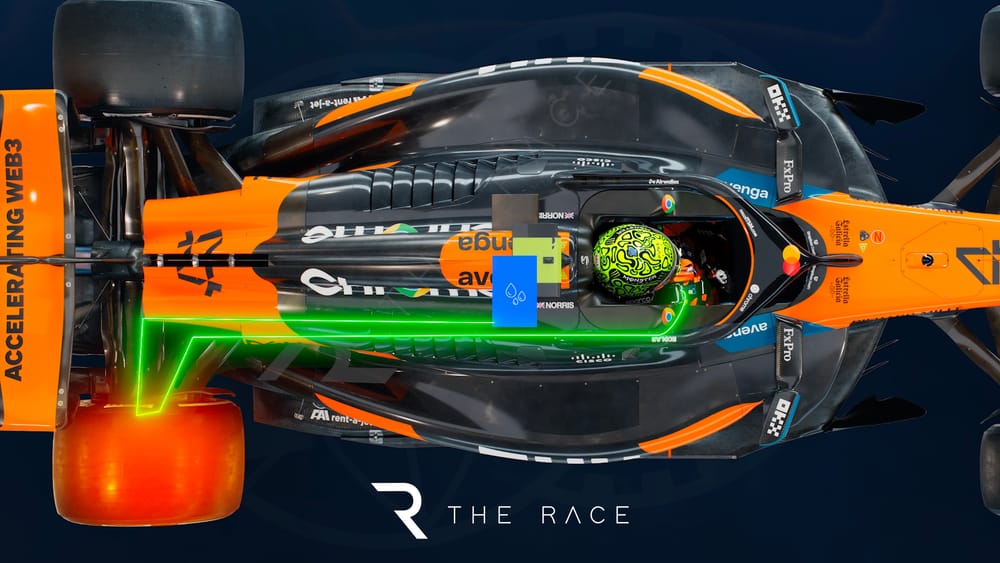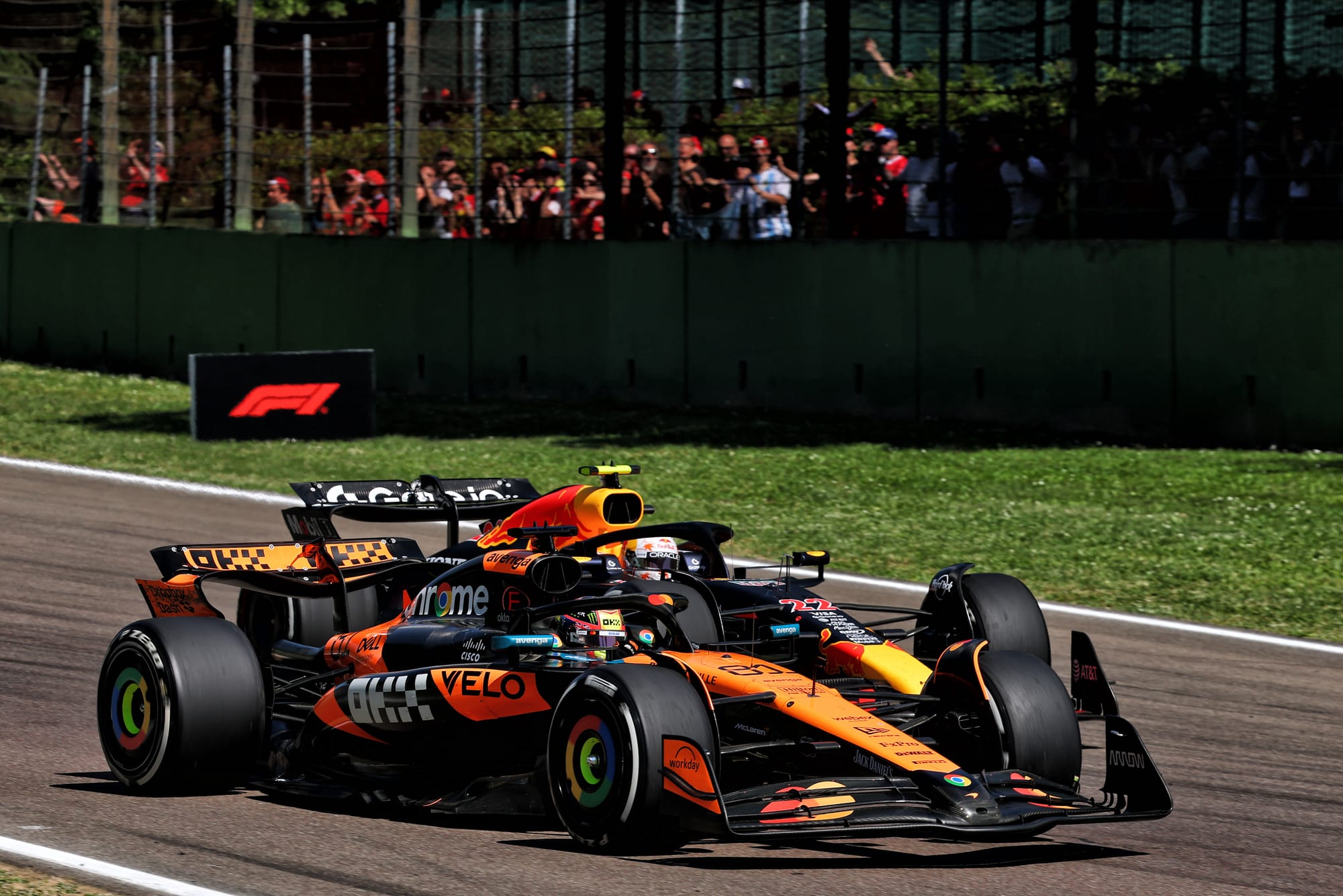Tyre cooling is Formula 1's hot topic once again in the wake of Red Bull turning the tables on McLaren to help Max Verstappen win the Emilia Romagna Grand Prix at Imola.
With no definitive answer on the factors that produced a big performance swing between F1 2025's top two teams compared to Miami a fortnight ago, the emergence of two FIA technical directives (one on skids and one on tyre cooling) ahead of the weekend has only served to fuel ideas of potential trickery being at play.
That could either be from McLaren being required to do something different on its car (which it strongly denies) or of Red Bull having unlocked some secret that has delivered a big step forward (which it would never tell us about).
The conclusion on whether the Imola swing was a one-off based on track layout, part of a wider performance shift, or something that was influenced by the TDs, will not be known for a while yet.
But what the wheel/tyre cooling directive in particular has given us immediately is a first proper glimpse into what rivals think McLaren could be up to.
FIA dialogue
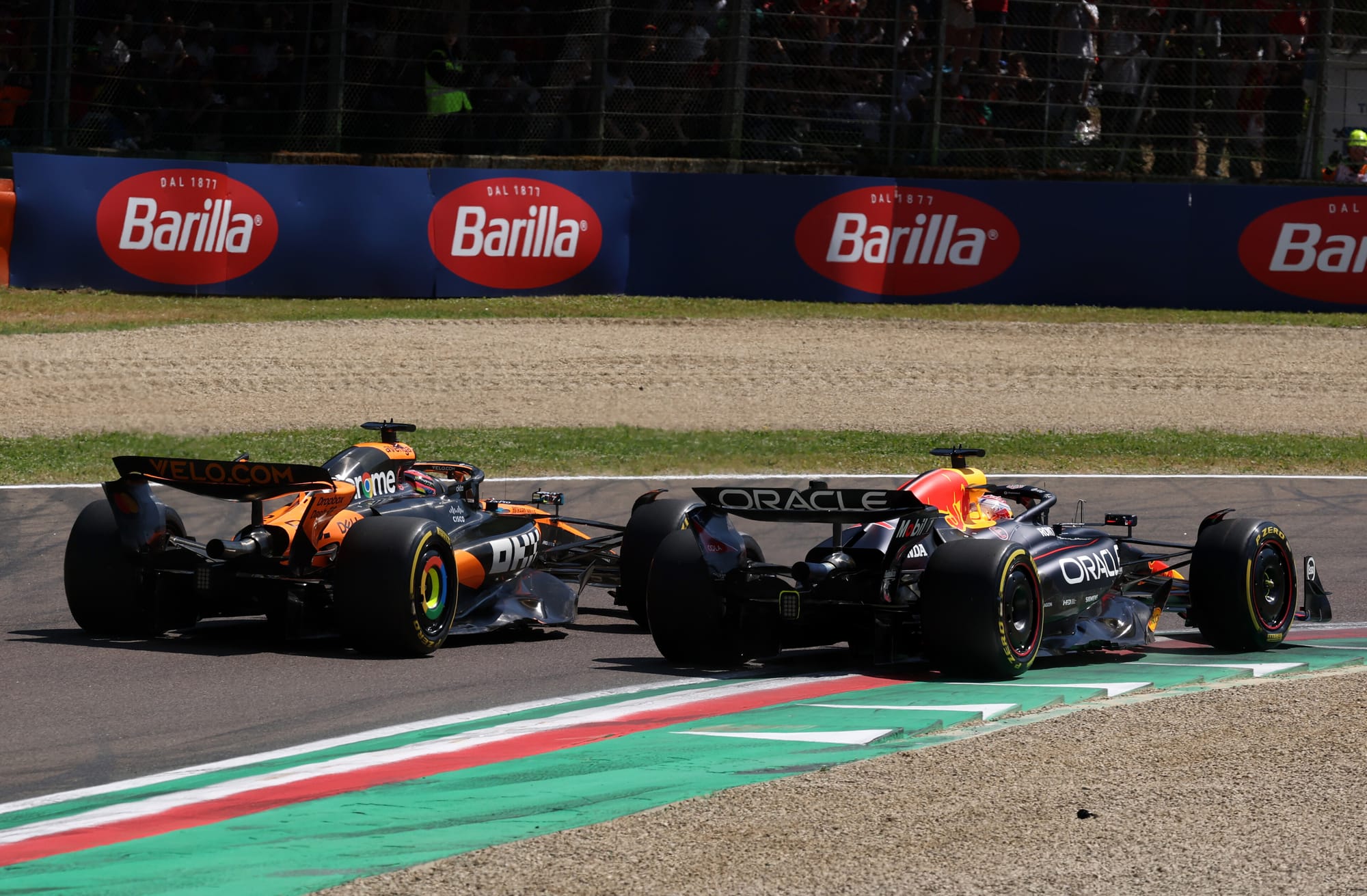
As previously reported, the TD that the FIA sent out on wheel bodywork in relation to tyre cooling was not one that stipulated any change in interpretation of the regulations.
Instead, it was just publishing correspondence that had taken place between Red Bull and the FIA technical department about some tyre cooling ideas.
This type of exchange is commonly used by teams to smoke out what rivals are doing - getting guidance that a certain system or procedure is illegal means that any other team using it effectively has to stop doing so immediately.
The correspondence is fascinating as it offers us insight from a competitor about theories on what McLaren could have been up to - and what the FIA's stance on it all is.
The Race has seen a copy of this TD, which includes a host of questions from Red Bull about design ideas and procedures relating to tyre cooling, plus some responses from the FIA on what it thinks is and is not allowed.
Some of the discussion relates to the use of gases within the tyre, and clarifies whether cooling of wheel bodywork is allowed on the grid (it isn't).
There is also a clarification about whether the heating or cooling of a garage to potentially influence the temperatures of the car would be allowed.
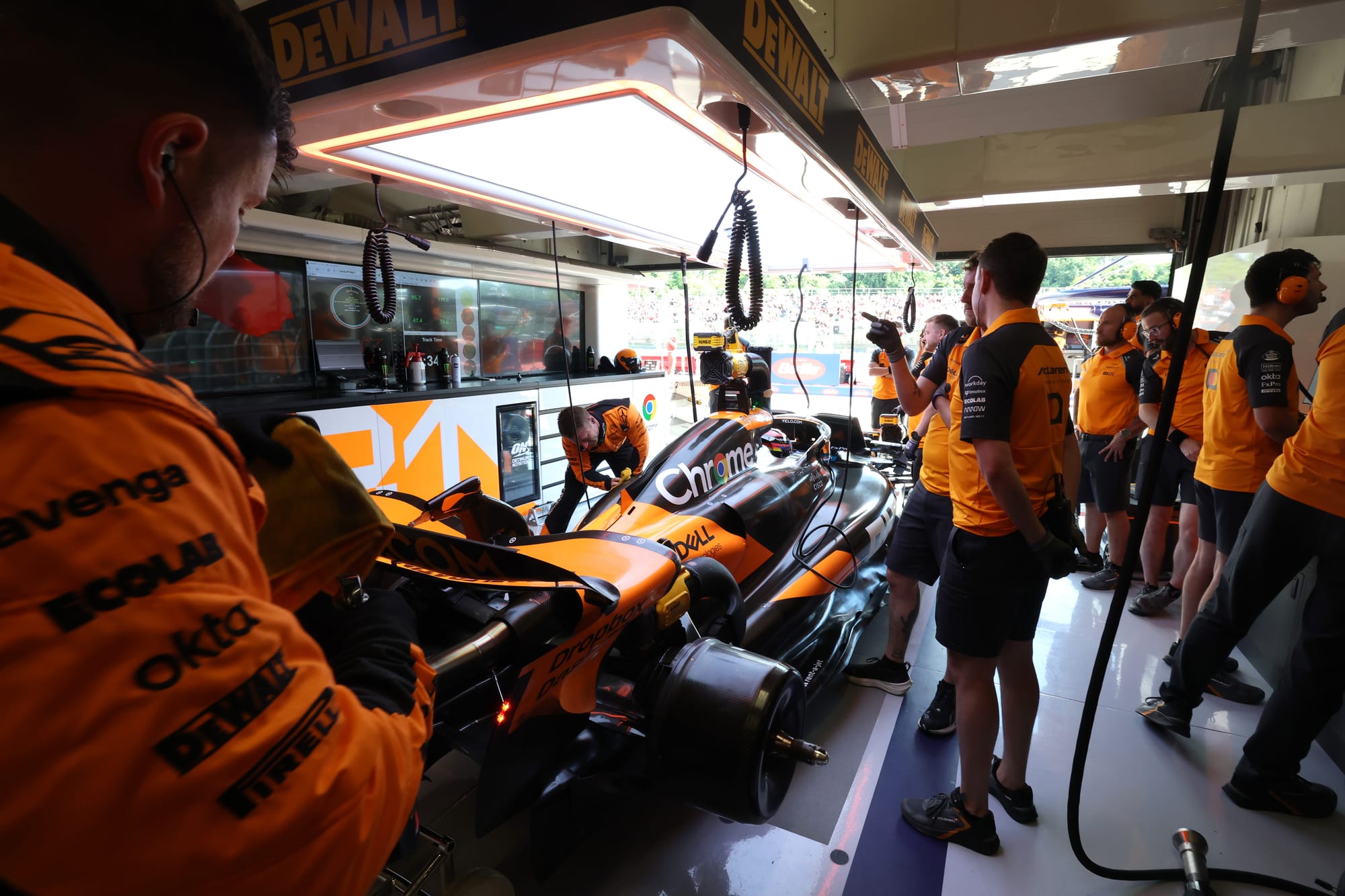
The FIA states that it will not ban the use of air conditioning devices to maintain a comfortable work environment, but if it was found that this was being used to influence tyres then it would step in.
But the most fascinating part about the correspondence is some of the design ideas put forward by Red Bull as ways that could potentially help with managing tyre temperatures.
Here we can reveal the ideas that have been proposed and discussed - with four suggestions being totally ruled out but one intriguingly not having the door closed on it totally.
Fluid-filled skins in the wheel assembly
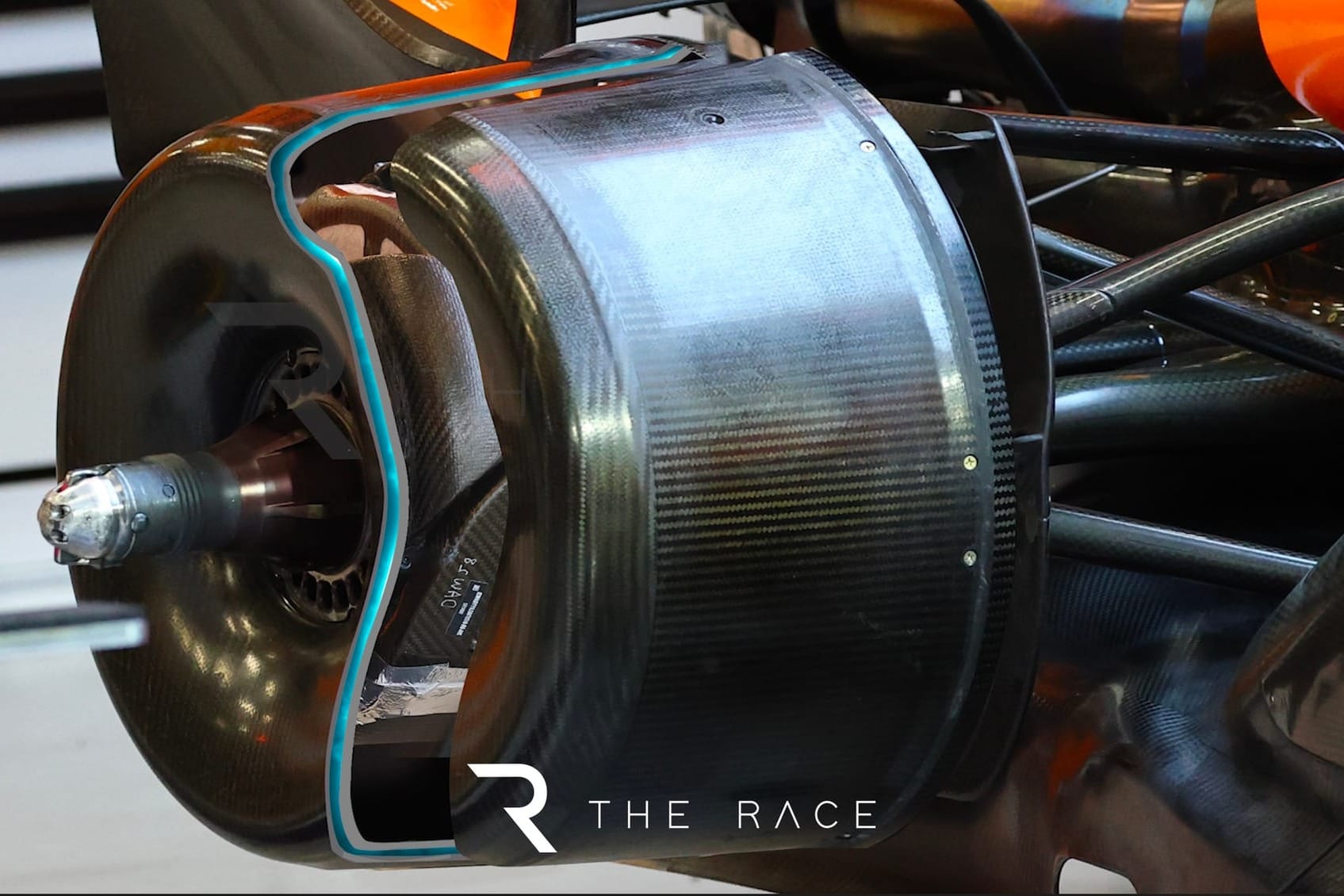
One idea is to enclose a cooling fluid within laminate skins of the wheel bodywork.
There would be no need for the team under the technical regulations to explain the purpose of this fluid, but it would be to affect the heat transfer between the skins of the wheel bodywork.
As these reservoirs are not defined in the technical regulations, the argument is a team is free to fill these with liquid to help heat transfer by conduction.
These reservoirs would be fully sealed, although an alternative design could be created that would leak some of this fluid into either the brake duct airstream or some mechanical components.
The FIA said that it would consider either direction illegal on two grounds, assuming that by fluid the idea meant liquid.
The first is that it felt this would be a breach of Article 11.5 that states: "Liquid cooling of the brakes is forbidden."
Plus, it felt that it may contravene Article 10.8.4d, which states that any "device, system or procedure [except for driving the car]" is illegal if it helps heat the wheels, hubs or brakes or maintain their temperature.
Fluid reservoir within the wheel bodywork
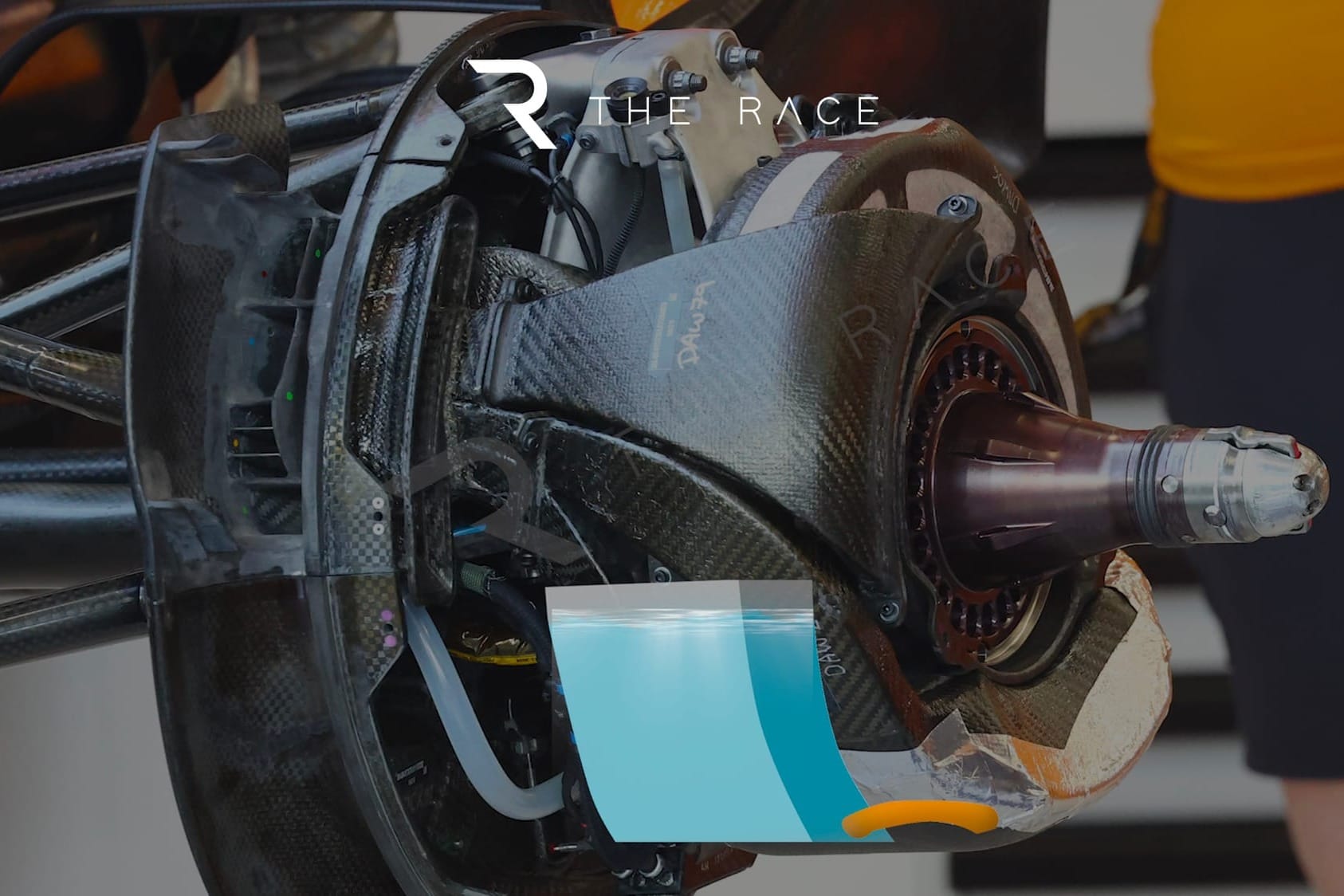
This idea would involve having a reservoir of cooling fluid that would be held within the wheel bodywork, which could then be deployed to help with cooling.
The fluid could then be transferred to a wheel bodywork duct via a pipe, with the feed generated by vehicle acceleration through momentum.
All the duct surfaces used would be impervious, as would the reservoir, to comply with rules regarding aerodynamic influence.
The design would also observe the wheel bodywork requirement to be rigidly attached to the upright, as the duct is completed by the rigid pipe and reservoir.
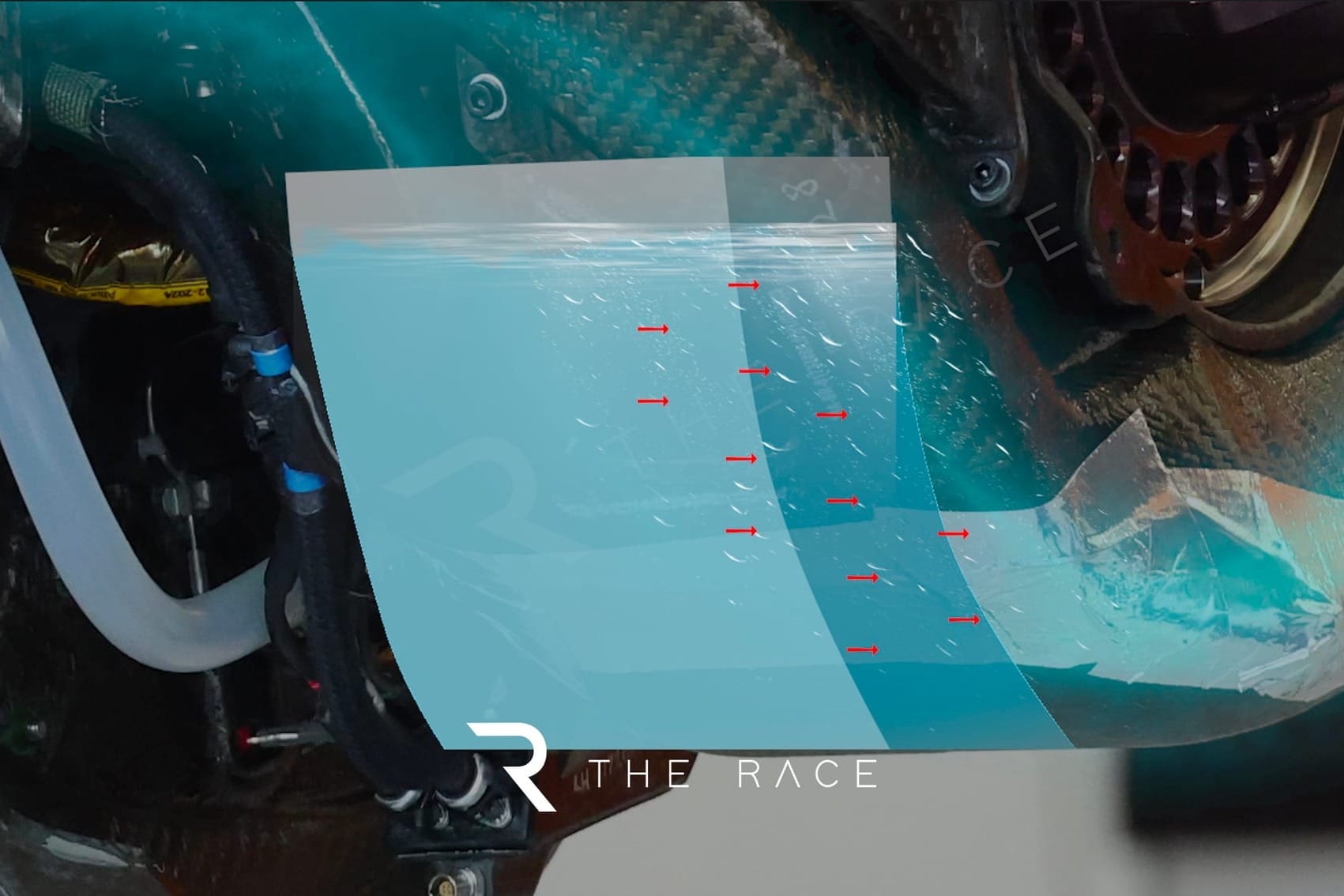
The FIA deemed that it would consider such a design illegal because it would be considered liquid cooling of the brakes (falling foul of Article 11.5) and may also contravene Article 10.8.4.d regarding the banning of systems to help control tyre temperatures.
A separate suggestion that made use of the liquid passing through the laminate thanks to incidental porosity - flowing into the airstream or mechanical components - was also dismissed by the FIA on the same grounds to the previous idea.
Fluid hidden in mechanical components
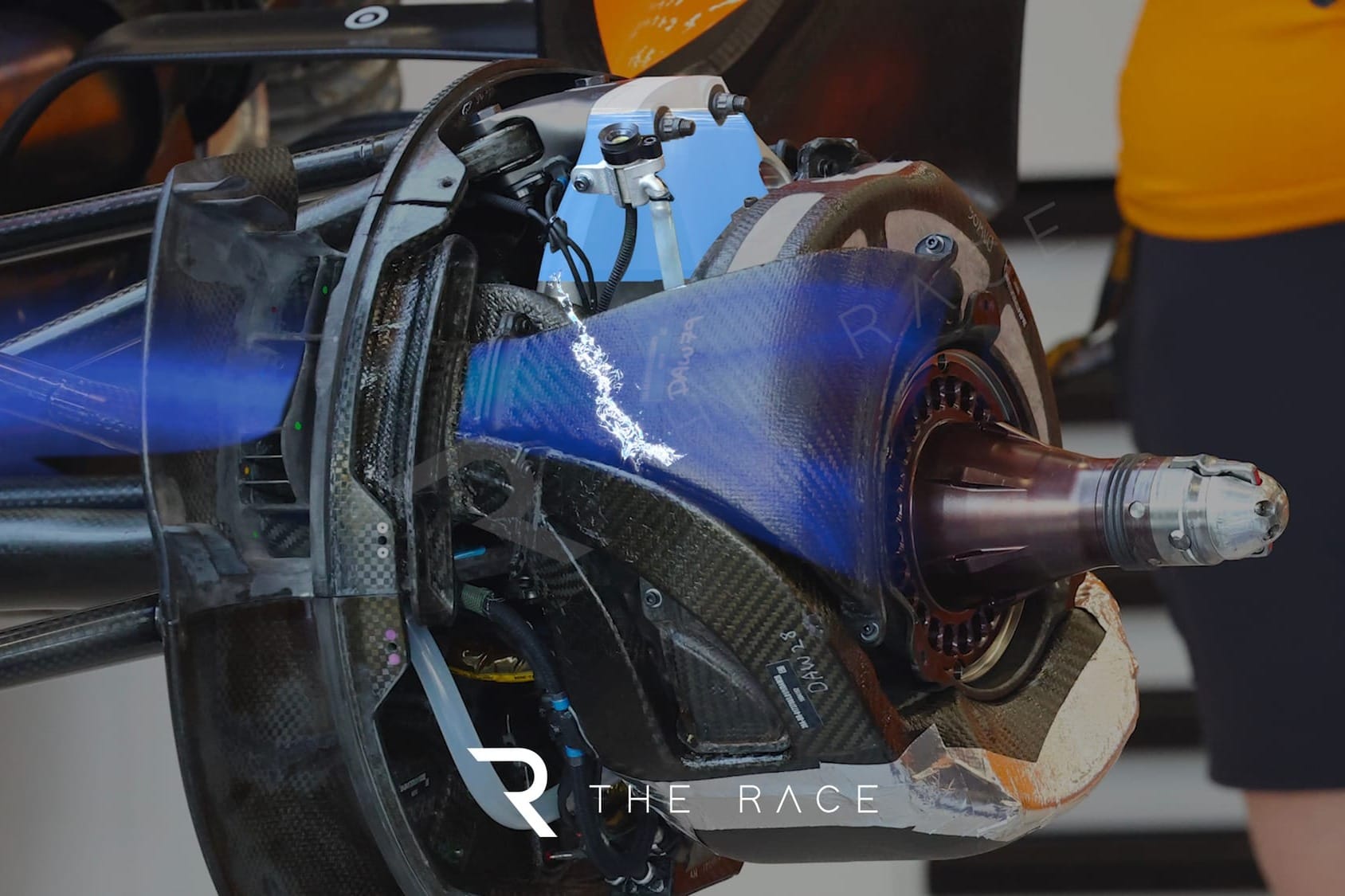
This idea is similar to the concept of having a reservoir for cooling fluid within the wheels, except this time it would not be a standalone element.
Instead, the fluid would be stored within a component defined as being associated with mechanical functioning of the car before being transferred to the wheel bodywork to help with cooling.
The design could be made in such a way that the fluid would pass directly from the mechanical component it is housed in to the air stream within the wheel bodywork - or through incidental leaking.
The FIA ruled this one out on the same grounds as before: illegal liquid cooling of the brakes and it being a system that could help maintain tyre temperatures.
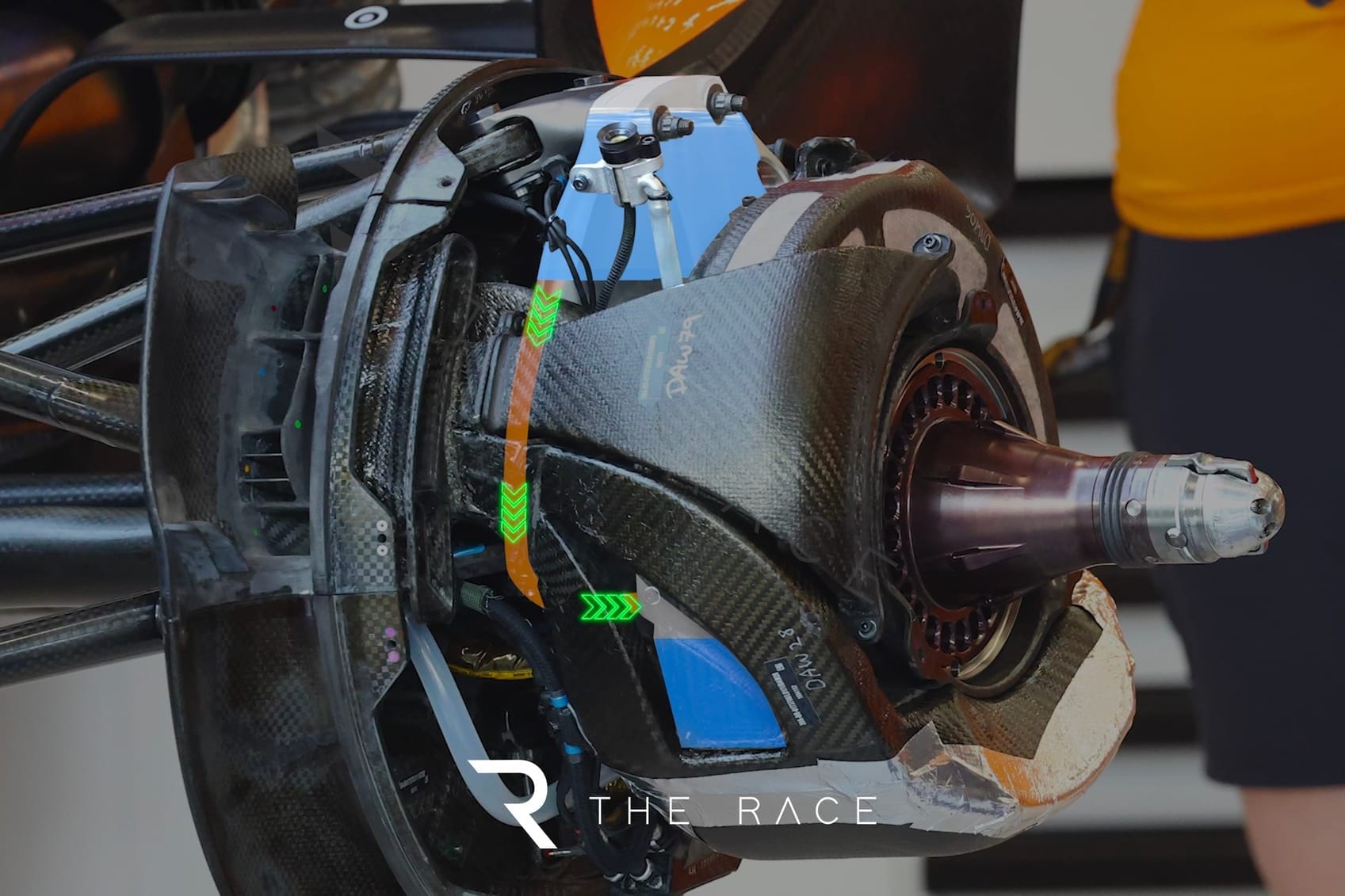
A different system was also suggested whereby the cooling fluid was simply transferred from one mechanical component in the wheel bodywork to help cool another mechanical component.
This again was deemed illegal on the same grounds as before.
The drinks bottle trick
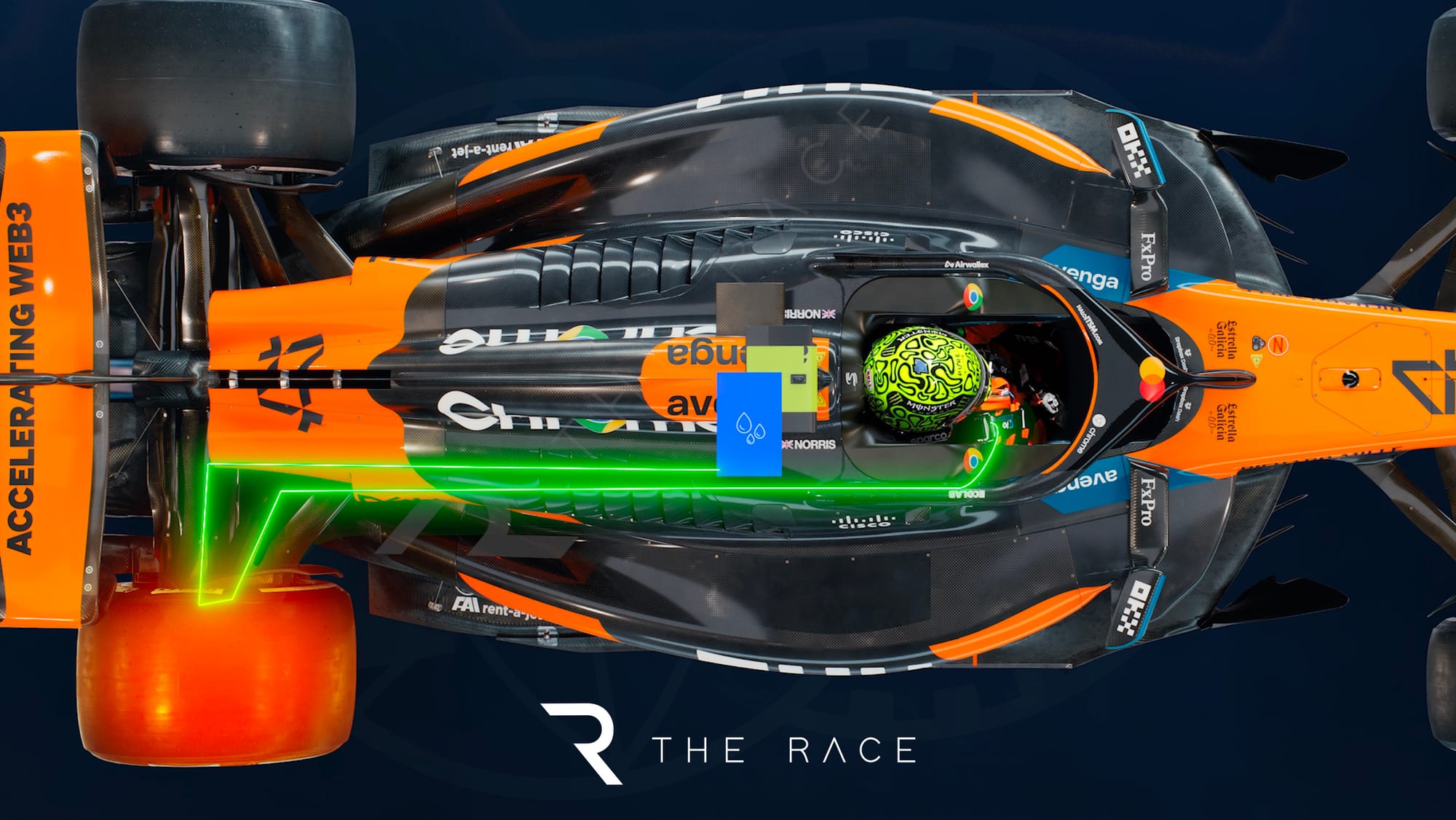
One of the more intriguing suggestions was to use a system whereby the fluid that is in the car as part of the driver's drinking bottle is used to help cool the wheel bodywork.
As F1's rules do not state that any fluids within the driver's drinks bottle is exclusively for the use of the driver, the exploitation of the reservoir created for this fluid is in theory allowed.
The idea would be that the drink system fluid would be piped to pass directly into the air stream within the wheel bodywork to help influence cooling.
An alternative idea would be for the liquid to be piped to the driver through the wheel bodywork but then leak in through incidental porosity.
This leakage could either go direct into the airstream or onto mechanical components, with the aim of further enhancing the cooling effect.
The FIA's response is that irrespective of whether the liquid is stored within the wheel bodywork, or is sent there, it would still be considered liquid cooling of the brakes and so would contravene article 11.5 - and also most likely 10.8.4.d.
A potential rule opening?
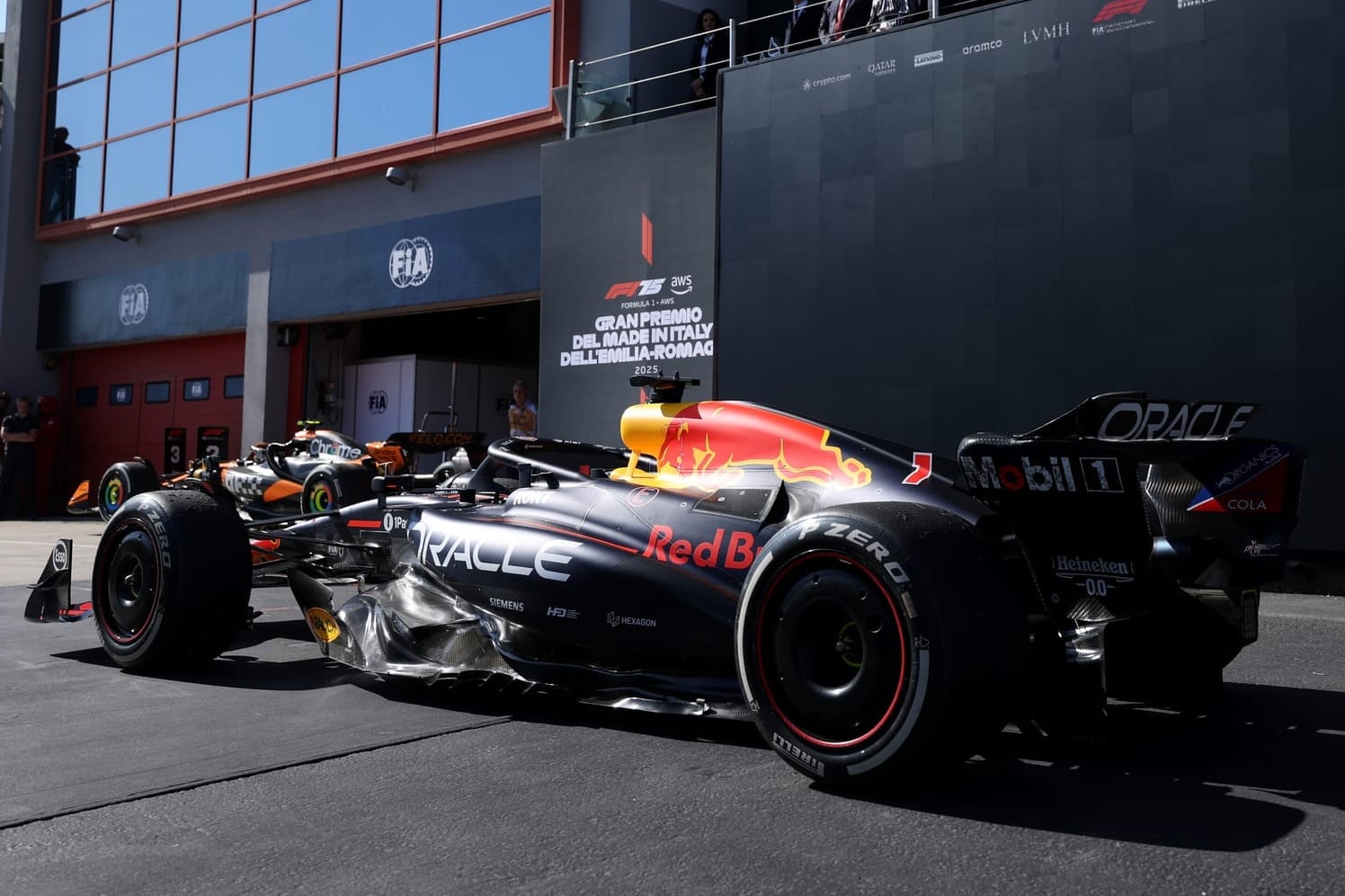
While all the concepts involving liquid cooling of the brakes and wheel bodywork were declared illegal, another area of interest was also suggested - and not all of this has been instantly dismissed by the FIA.
Thermoelectric cooling
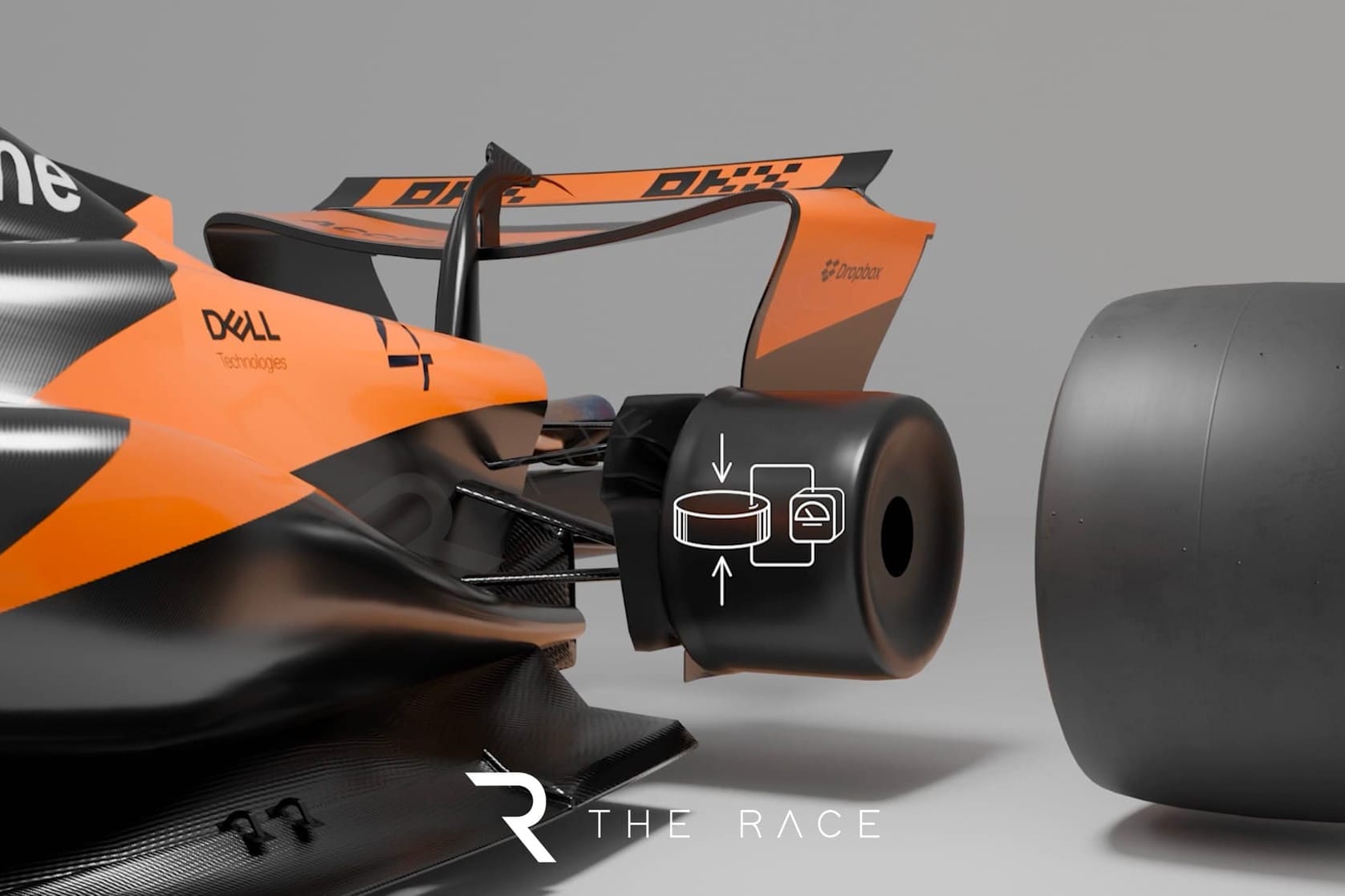
The idea would be not to use liquid at all but to create a design that featured thermoelectric cooling.
Such devices are mentioned in article 15.4.1 of the technical regulations that outlaws the shape-changing materials that some had suggested could be employed within the wheel bodywork, but are actually illegal for use in such circumstances.
The rule states that "shape memory materials except for piezoelectric materials used in electrical sensors" are among the list of materials that are banned totally in F1.
With that exemption allowing them, a design could be created that would use such piezoelectric materials to help cool electrical sensors within the wheel bodywork - and therefore have a secondary influence in helping keep a lid on the wheel bodywork temperature.
The FIA's response here does not follow the previous pattern of outlawing ideas as something that could help maintain tyre temperatures.
Instead, it states that a sensor would fall under the definition of being a device used for measuring a physical property with minimal changes to the system being measured.
If such a device made significant changes to a system, the FIA would consider it to be an actuator, and such a piezoelectric device would not be exempted under Article 15.4.1.b so therefore illegal.
But a separate suggestion of Red Bull using what is known as a Peltier device in this area has not had automatic pushback.
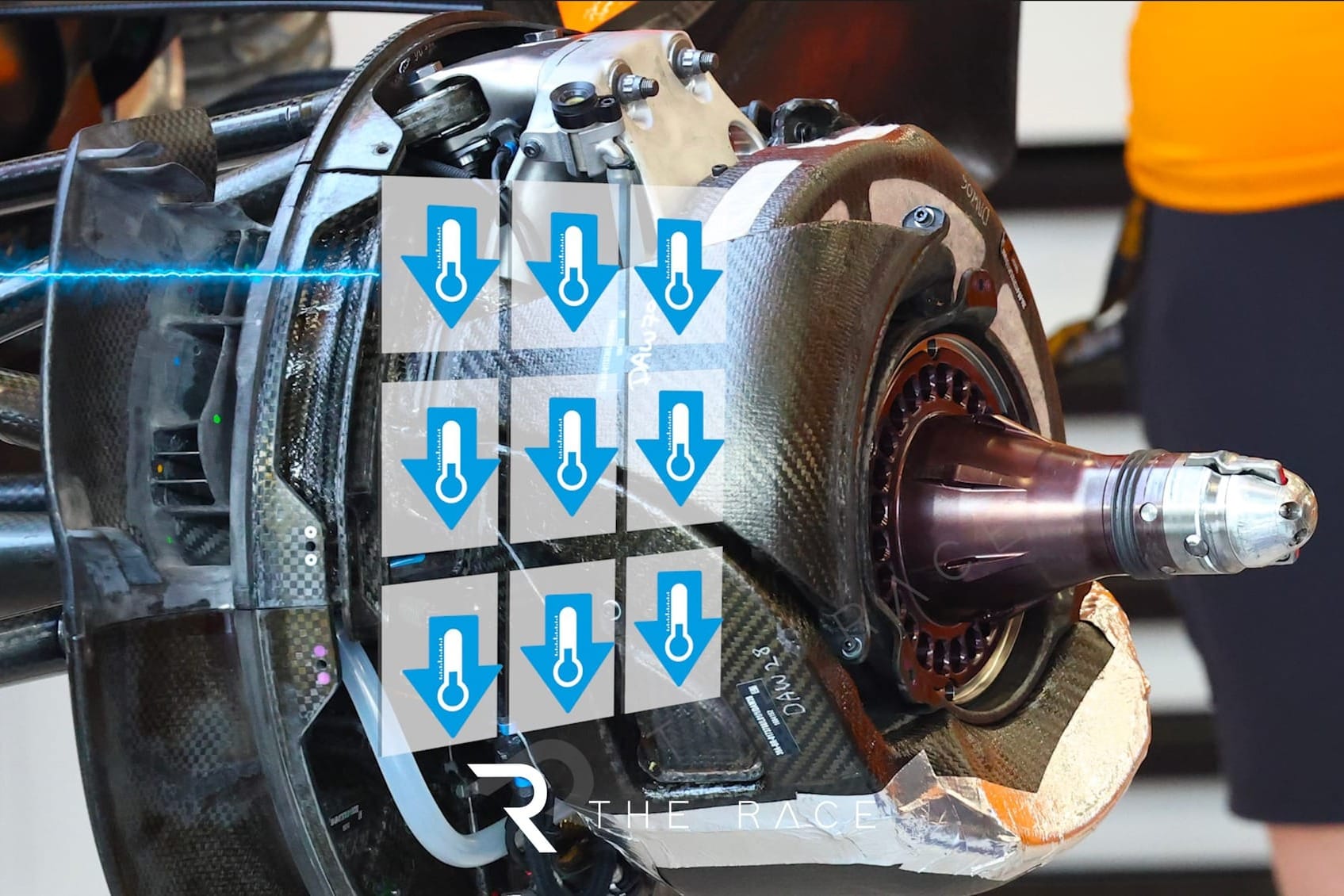
Peltier devices are solid-state thermoelectric modules that can be used to either heat something up or cool it down.
They make use of an electrical current flowing through two dissimilar conductors to trigger heat to either be emitted (heat things up) or absorbed (cool them down) at the junction of the materials.
By making use of electrical currents, the square or rectangular blocks that make up Peltier devices can be attached in areas where either cooling or heating is required. And you can switch between the two actions by changing the electrical current.
So with reference to the quest to reduce temperatures inside the wheel bodywork, a design could incorporate having such Peltier devices fitted somewhere within the assembly that could then be used to cool things down.
As there are no moving parts on a Peltier device it conforms to technical rules that require everything to be "rigidly attached" to the upright.
The FIA's response on the idea of using such a solid-state thermoelectric cooler is intriguing.
It said: "We believe that the use of Peltier devices for cooling in this area is not covered by the technical regulations but would not consider it favourably and would seek to specifically exclude it for 2026."
What is interesting is that wording does not expressly forbid that practice right now and, while the FIA said it would not especially like teams to be doing it, F1 designers do not operate in a world where they try to please the governing body. They are more interested in making the car go faster.
Idea vs reality
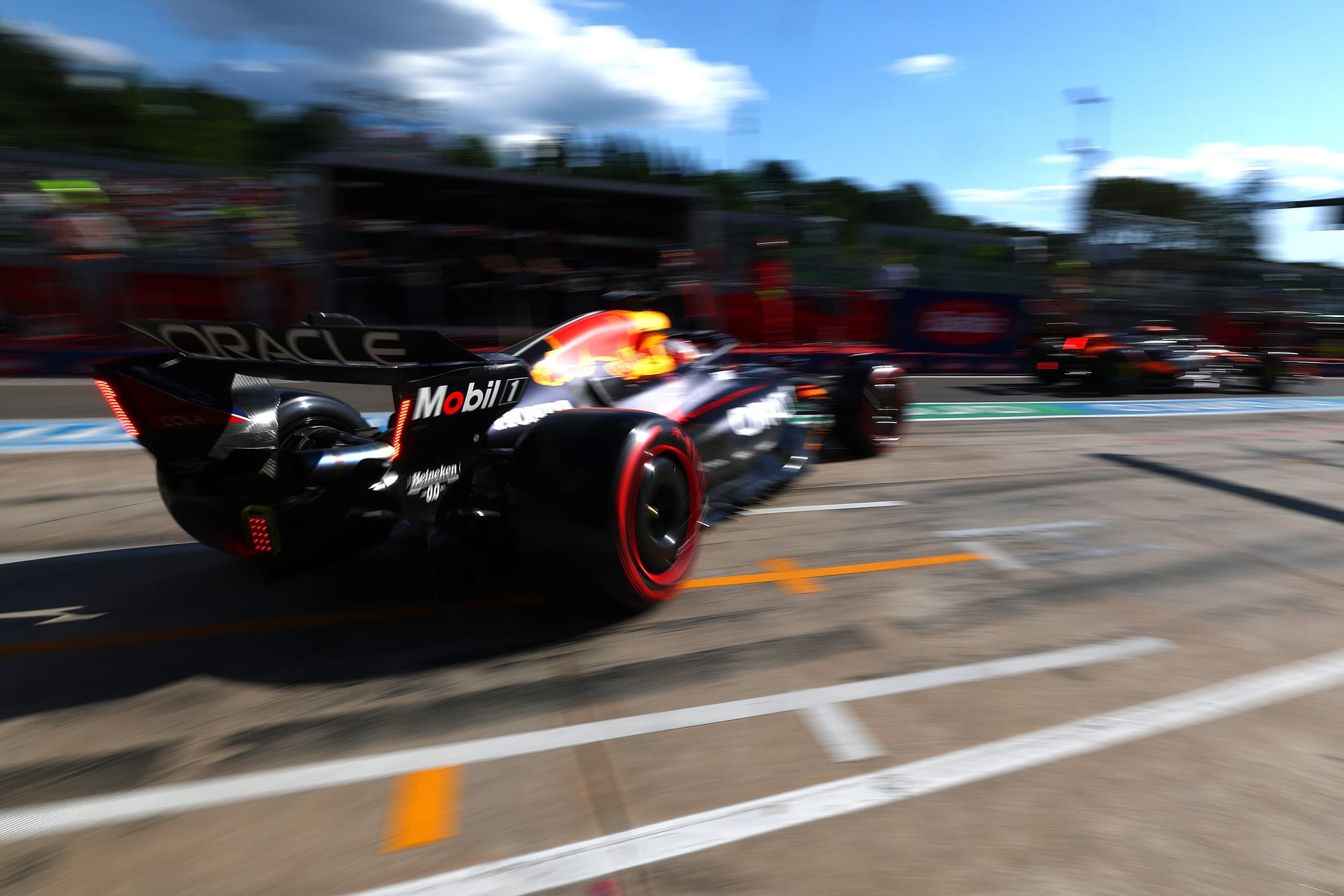
Whether or not such Peltier devices could be incorporated within wheel bodywork in such a way to both fully comply with other regulations but also help with cooling is something only F1 teams will know, but the FIA's stance will certainly have triggered them to get their thinking hats on.
So despite the FIA having given McLaren's wheel assembly and brake system the all-clear in multiple inspections, including after the Miami GP, the quest for answers from its rivals about what it is up to is far from over.
But it could even be that the FIA's clarifications on the matter before Imola were enough to open up an avenue for Red Bull to exploit so it could better manage its tyres.


